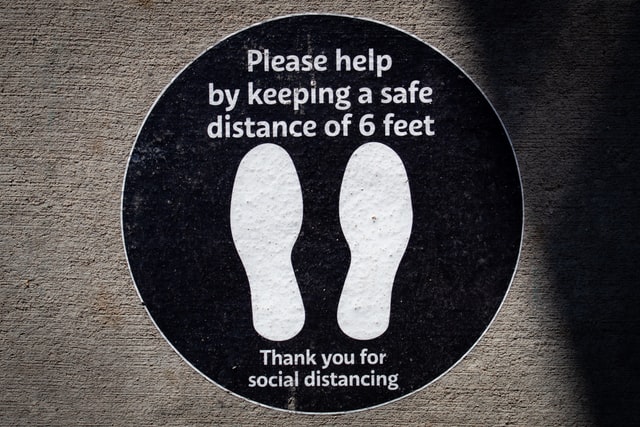
COVID-19 has brought unprecedented challenges across all levels of society, but older people have undoubtedly been at the highest risk from this disease, particularly those living in long-term care facilities. As in many countries, the Chilean government has produced guidelines and regulations to encourage the prevention and control of COVID-19 outbreaks in residential and nursing care homes (Comas-Herrera et al., 2021). Though the Chilean government claims that they are doing well in terms of vaccination rates (40% of Chileans have received at least one vaccine dose—the third highest rate in the world after the UK and Israel (BMJ 2021)), the road to recovery hasn’t been easy, in particular at a moment in history when Chilean authorities lack the trust of the country’s population. This blog reports on the findings of a study by Browne et al. (2021) that assesses the barriers and facilitators towards implementing measures to protect long-term care facilities (LTCF) from COVID-19. The study reinforces the fact that good protocols are essential but will not alone produce the desired results.

This blog reports on the findings of a study that assesses the barriers and facilitators towards implementing measures to protect Long-Term Care Facilities (LTCF) from COVID-19.
Methods
Implementation science (IS) was used to assess the level of implementation of the COVID-19 measures, guidelines and protocols (the intervention) set up by Chilean Governmental Institutions (the provider), and to identify facilitators and barriers for their implementation in LTCF (the recipient) in the context of a world-wide pandemic and an unregulated LTCF market (the environment). This analytical framework is based on the distinction between efficacy (the outcome of measures under ideal conditions) and effectiveness (the outcome under real conditions). Four implementation factors were considered:
- Goals (did the protocols and guidelines given to LTCF align with the objective of preventing and controlling COVID-19 outbreaks?);
- Finances (did LTCF have enough resources?);
- Technical requirements (do staff and managers in LTCF have the right skills to implement the measures?);
- Culture (was the culture and structure of LTCF suitable to implement the measures, and were they prepared to change their way of working?)
A mixed methods design, based on a quantitative survey to forty-one managers of LTCF (88% response rate) and qualitative semi-structured interviews of eight LTCF staff ,was used. Managers were not interviewed, but an open text question was included in the survey, so additional insights were obtained and contrasted with those given by members of staff. The study included LTCF from two providers (these providers run 41 nursing homes with a total of 2,770 residents, equivalent to almost 30% of all residents in non-profit LTCF in the country). The survey and semi-structured interviews were both carried out in July 2020, just after the figures of new cases started decreasing due to imposed lockdown measures in the country (University of Oxford, 2021).
Findings
Understanding the measurements, the concern for older people, fear and uncertainty were found to be strong incentives to adopt COVID-19 measures in LTCF. However, the origin of the protocols was unknown for staff, and seen as a top-down measure which could act as a barrier to implementation. Furthermore, the study participants reported that very clear posters were created for them to understand the guidelines. However, practically no staff reported having seen the actual protocols which may limit the ability of delivering the measurements as intended (i.e. fidelity).
Measures were more easily implemented when resources (e.g. PPE) were adequate and LTCF had enough members of staff. On the other hand, the lack of suitable infrastructure was found to be an important barrier for the implementation of prevention and control measures. Staff availability, lack of support and of adequate training and/or experience among the newly recruited staff complicated the implementation of measures. The workplace environment at LTCF was considered positive. However, there was a tension between the newly recruited staff and those that have been working at the LTCF for longer. Finally, some resistance to change was shown by staff. Many found it difficult to not be able to share a space or spend time with LTCF residents as they normally did and naturally, many residents were not able to understand what was happening.

The availability of PPE, staff availability, having a common purpose, fear of the unknown and trust were found to be the enablers of implementing COVID-19 measures in LTCF in Chile.
Conclusions
These findings show that, even with good protocols and guidelines, the intended results of the implementation of COVID-19 measures cannot be taken for granted. While many factors play an important role in times of crisis, “a strategic orchestration between private companies, the state, and civil society is a key component for the implementation of the COVID-19 strategy in LTCF”.

Coordination between all actors involved in the creation, translation and implementation of COVID-19 measurements are key to obtain the expected results.
Strengths and limitations
This study acknowledges the difference between efficacy (outcome of an intervention under ideal conditions) and effectiveness (outcome of an intervention under normal conditions). For this, the authors contribute to the literature by focusing on numerous dimensions of the implementation process (e.g. resources) and also include key factors that have been neglected in previous research and that may influence effectiveness (such as cultural issues). However, environmental factors were not included in the analysis. For example, the unregulated market of LTCF, the increasing mistrust of authorities in the country after the earthquake and the political instability experienced in Chile in the last years.
The study also shows the relevance of IS to guide and evaluate the implementation of COVID-19 measures in LTCF in the country and potentially in other parts of the world. Nevertheless, as the authors rightly highlight, the study lacks representativeness, it only includes one period of analysis and, more broadly, is limited by the lack of publicly available data to assess, for instance, the mortality impact of COVID-19 in LTCF.

This study acknowledges the difference between efficacy (outcome of an intervention under ideal conditions) and effectiveness (outcome of an intervention under normal conditions).
Implications for practice
Human capital is highlighted as a critical element for implementation. This relates to not only the availability of staff, but also their skills, training and support received play an important role. Funding high-quality short training is suggested as one of the potential solutions. Protocols should also be produced in a manner that is properly translated to LTCF staff, avoiding misinterpretation. Moreover, encouraging an environment where staff can express their concerns and build a trusting relationship within LTCF and with national and local level policymakers is also essential. Dialogue between all the actors involved in the delivery of new measures could encourage people to feel that they can trust and also share their expertise with each other. Finally, the general lack of available public data undermines governmental institutions’ ability to produce protocols that are evidence informed.
In the United Kingdom (UK), the COVID-19 pandemic has also raised challenges for care home residents, their families and the staff that look after them. Governments and charities have also provided guidance, resources, and best practice advice for care homes to control and prevent outbreaks, but many questions remain with regards to the variability on guideline interpretation (e.g. hospital discharges and visitors) and the ability of care homes to obtain essential resources (e.g. PPE). Furthermore, a lack of staff availability and a widely underfunded sector has put LTCF in a disadvantaged position to face the pandemic.

Dialogue between all the actors involved in the delivery of new measures could encourage people to feel that they can trust and also share their expertise with each other.
Conflicts of interest
No conflict of interest
Links
Primary paper
Browne J, Palacios J, Madero-Cabib I, Dintrans PV, Quilodrán R, Ceriani A, et al.. Enablers and Barriers to Implement COVID-19 Measures in Long-Term Care Facilities: A Mixed Methods Implementation Science Assessment in Chile. Journal of Long-Term Care. 2021;(2021):114–23. DOI: http://doi.org/10.31389/jltc.72
Other references
Comas-Herrera, A. et al (2021) Updated international report: Mortality associated with COVID-19 in care homes, data up to 26th January 2021. Available from: https://ltccovid.org/2021/02/02/updated-international-report-mortality-associated-with-covid-19-in-care-homes-data-up-to-26th-january-2021/
BMJ (2021) COVID-19: Spike in cases in Chile is blamed on people mixing after first vaccine shot. 373:n1023, April, doi: https://doi.org/10.1136/bmj.n1023
University of Oxford (2021) Coronavirus Pandemic (COVID-19) – the data, Statistics and Research. Our World in Data https://ourworldindata.org/coronavirus-data
Photo credits
- Photo by Ehimetalor Akhere Unuabona on Unsplash
- Photo by Jan Vasek on Unsplash
- Photo by Austrian National Library on Unsplash
- Photo by Mauro Mora on Unsplash
- Photo by Antenna on Unsplash
